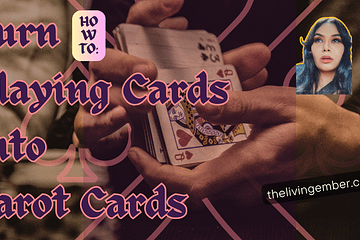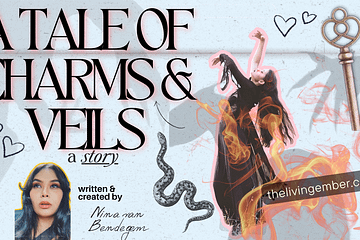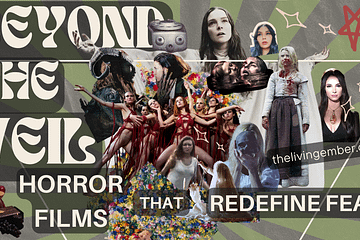The Power of Intention in Art
Setting an intention before you begin creating is like planting a seed in fertile soil. It guides your process, giving your work purpose and direction. Recent studies in psychology have shown that intention-setting can significantly enhance creativity and problem-solving by focusing the mind and encouraging a state of flow1. When you create with intention, you’re not just making art; you’re making something that is charged with meaning and purpose.
Start by asking yourself: What do I want to communicate with this piece? What emotions or messages do I want to evoke? This clarity of purpose will not only guide your creative decisions but also imbue your work with a certain energy that can be felt by others.
Infusing Magic into Your Creative Practice
Magic, in the context of art, isn’t about casting spells or waving wands (though it can be if that’s your thing!). It’s about tapping into a deeper source of inspiration and connecting with something beyond the mundane. This might be your own intuition, the collective unconscious, or the natural world around you. By infusing your creative process with a sense of magic, you can create art that feels otherworldly, evocative, and timeless.
In The Organized Mind: Thinking Straight in the Age of Information Overload, Daniel J. Levitin explores how organizing our mental and physical environments can enhance creativity and productivity2. Levitin argues that by creating structured routines and minimizing distractions, we can harness our cognitive resources more effectively, leading to more innovative and focused work. This approach is particularly valuable for artists looking to infuse their creative process with intention and magic, as a well-organized mind can better channel creative energy and inspiration.
One way to do this is by incorporating rituals into your creative practice. Rituals don’t have to be elaborate; they can be simple actions that help you transition into a creative mindset. For example, you might light a candle, meditate for a few minutes, or arrange your workspace in a particular way before you begin. These small acts can serve as a signal to your mind that it’s time to create, allowing you to enter a more focused and inspired state2.
Another way to bring magic into your art is by using symbolism. Symbols carry powerful meanings and can add layers of depth to your work. Whether it’s a particular color, shape, or motif, consider how you can incorporate symbolic elements that resonate with your intention. This can turn your artwork into a visual spell, communicating not just what is seen but also what is felt beneath the surface3.
Connecting with the Elements
Nature has always been a source of inspiration for artists. By connecting with the elements—earth, air, fire, and water—you can ground your creative practice in something timeless and universal. Each element carries its own qualities and energy, which you can harness to influence your work.
- Earth: Stability, grounding, and physicality. Incorporate earthy colors, textures, and materials into your work to evoke a sense of solidity and connection to the natural world.
- Air: Intellect, communication, and inspiration. Use light, airy colors, and flowing forms to create a sense of movement and clarity in your work.
- Fire: Passion, transformation, and energy. Bold colors, dynamic compositions, and intense contrasts can convey the fiery energy of this element.
- Water: Emotion, intuition, and fluidity. Soft, cool tones, and organic shapes can evoke the calming and reflective nature of water.
By aligning your work with these elemental energies, you can create pieces that resonate on a deeper level, both visually and emotionally4.
Mindful Creation: The Art of Presence
In a world that often demands speed and productivity, it’s easy to fall into the trap of rushing through the creative process. But true magic happens when you slow down and become fully present with your work. Mindfulness, the practice of being fully engaged in the present moment, has been shown to enhance creativity by reducing stress and encouraging a state of flow5.
When you create mindfully, you’re not just making art; you’re engaging in a dialogue with the materials, the process, and yourself. This can lead to unexpected discoveries and a deeper connection with your work. Try to approach your art with curiosity and openness, allowing yourself to explore without judgment or expectation.
Manifesting Through Art
Art has the power to manifest change—not just in the world around us, but in our own lives. When you create with intention and magic, you’re not just expressing yourself; you’re creating a vision of the world as you wish it to be. This is the essence of manifestation: bringing something from the realm of imagination into reality.
Consider creating art that reflects your desires, dreams, or goals. Whether it’s a vision board, a piece of jewelry, or a painting, infuse it with the energy of what you want to manifest. As you work, hold your intention in your mind, and imagine it coming to life through your art. This can be a powerful tool for personal transformation and growth6.
Bringing magic and intention into your creative process is about more than just making beautiful things; it’s about creating art that is alive, resonant, and meaningful. By setting clear intentions, incorporating rituals, connecting with the elements, and practicing mindfulness, you can elevate your art to a new level of depth and power.
Sources
- Baas, M., Nevicka, B., & Ten Velden, F. S. (2020). “The creative power of working memory: Effects of the relationship between working memory capacity and mind wandering on creative thinking,” Psychological Research, 84(7), 2037-2047. ↩
- Levitin, D. J. (2021). The Organized Mind: Thinking Straight in the Age of Information Overload. Dutton. ↩
- Hall, J. (2022). The Secret Teachings of All Ages: An Encyclopedic Outline of Masonic, Hermetic, Qabbalistic and Rosicrucian Symbolical Philosophy. TarcherPerigee. ↩
- Grimes, R. L. (2019). The Craft of Ritual Studies. Oxford University Press. ↩
- Zabelina, D. L., & Robinson, M. D. (2021). “Mindfulness as a tool for creativity,” Psychology of Aesthetics, Creativity, and the Arts, 15(3), 355-367. ↩
- McTaggart, L. (2020). The Power of Eight: Harnessing the Miraculous Energies of a Small Group to Heal Others, Your Life, and the World. Atria Books. ↩




0 Comments